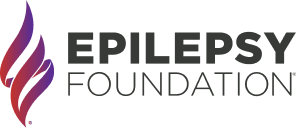Seizure Rescue Medications
What types of medicines can be used as a rescue treatment?
The most common type of rescue medicines are from a group of medicines called benzodiazepines. These are generally fast-acting, which means they will start to work quickly once they get into the bloodstream.
- Some benzodiazepines can be swallowed in pill form, some can be placed under the tongue or placed between the cheek and the gum, and some can be given rectally or by a nasal spray. They are only given by an injection directly into the blood stream vein in hospital settings.
- The names of benzodiazepines that are most commonly used as rescue medications include: diazepam (Valium®), lorazepam (Ativan®), and midazolam (Versed®).
- The availability of these medicines in different forms and how they are used may vary from country to country.
- In the United States, nasal midazolam (brand name Nayzilam®), nasal diazepam (brand name Valtoco®) and rectal diazepam gel (brand name Diastat®, have been approved by the Food and Drug Administration (FDA) for out-of-hospital use for the treatment of acute repetitive seizures or clusters.
- Nasal midazolam is approved for persons aged 12 and older, nasal diazepam is approved for persons aged 6 and older and rectal diazepam is approved for persons aged 2 and older.
- The other medicines have been used in out-of-hospital treatment but have not yet been approved by the FDA.
- The main points to consider in using these medicines is how fast they will act, what forms may be available, who can give it, and how easy it may be to use. Other factors such as cost, possible side effects, and everyone’s comfort level in using the medicines must be talked about with your doctor.
- People who may need a fast-acting medicine at specific times for breakthrough seizures and who are alert and able to swallow may use one of the pill forms of lorazepam or diazepam.
- People who are not able to swallow for some reason may be given a form that can be given under the tongue (sublingual), between the cheek and gum (buccally), or sprayed into a nostril (nasal spray).
- People who are not able to take an oral form can use the rectal form of diazepam. This is most often prescribed for young children.
How can I learn more about these?
Everyone who is given a prescription for a rescue treatment should receive training on what to do, when, and how often. Usually, your first teaching should come from the healthcare professional who gave the prescription. However, you can learn more about the treatments and how to give them right here. Once you feel confident, make sure to teach your family, friends, or whoever else may help you during a seizure. They'll want to know what to do too.
A key point to consider: It often helps to have someone at your healthcare provider’s office demonstrate how to use the rescue medicine, so you know how to administer it at home if needed.
In some cases, it may be helpful to try the first dose of a rescue medicine when you are at home or in your healthcare provider’s office, to give you a chance to practice how to use it and see how the medicine will affect you.
Some people worry that this will 'waste' a dose of medicine. However, learning your response to a medicine is not a waste. It's an important part of knowing what to expect. And of course, practice makes perfect! You want to know ahead of time how to give the medicine quickly when you really need it.
Resources
Epilepsy Centers
Epilepsy centers provide you with a team of specialists to help you diagnose your epilepsy and explore treatment options.
Epilepsy Medication
Find in-depth information on anti-seizure medications so you know what to ask your doctor.
Epilepsy and Seizures 24/7 Helpline
Call our Epilepsy and Seizures 24/7 Helpline and talk with an epilepsy information specialist or submit a question online.
Tools & Resources
Get information, tips, and more to help you manage your epilepsy.


